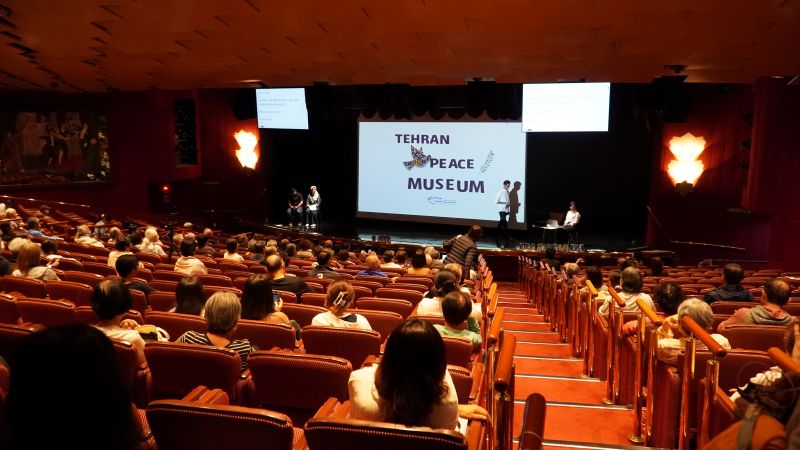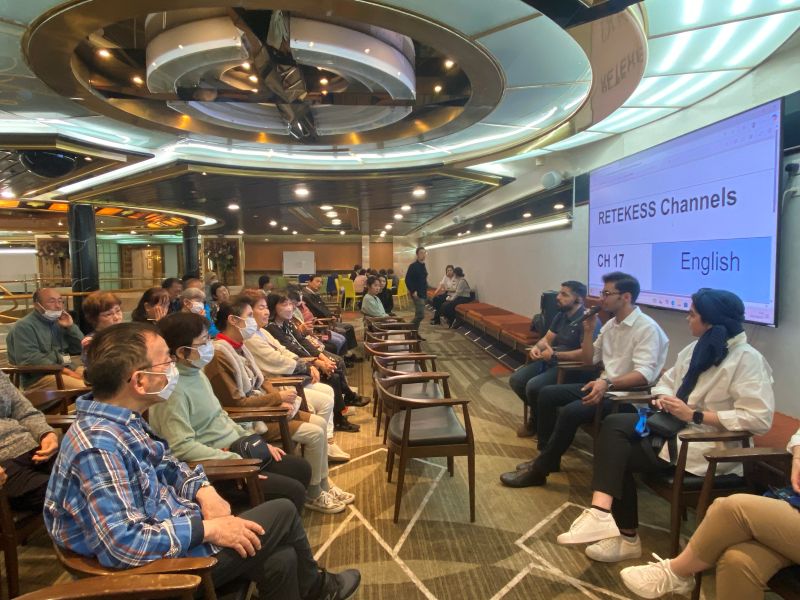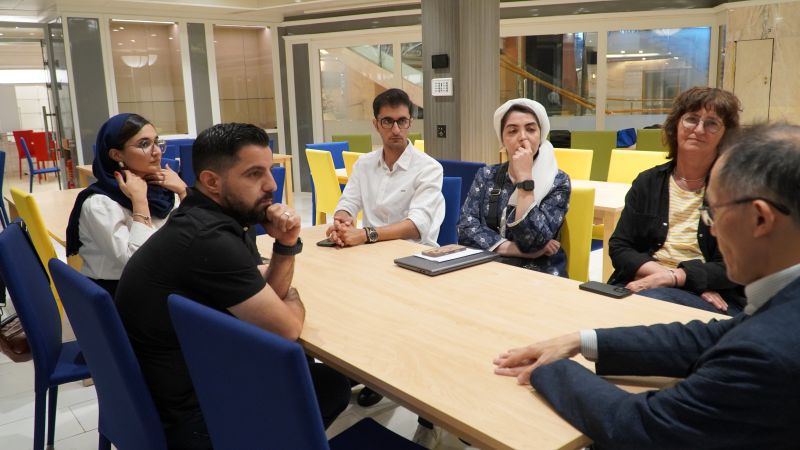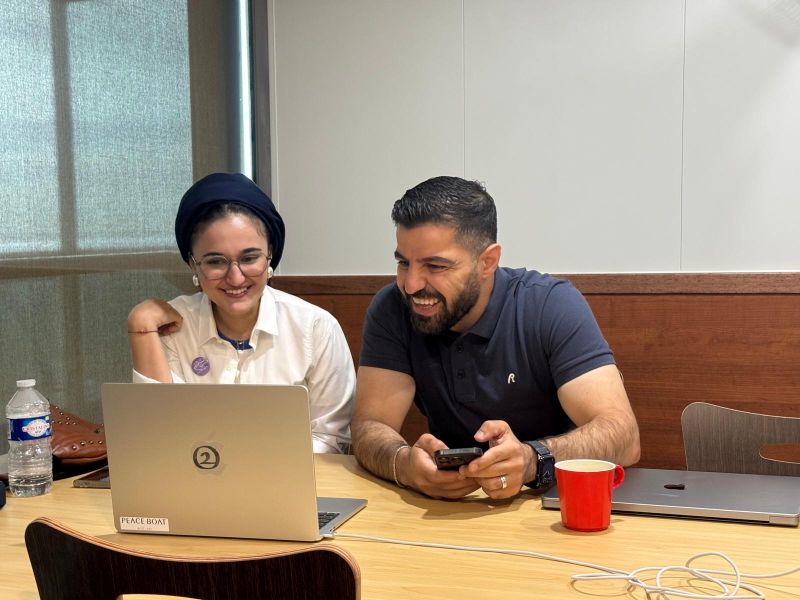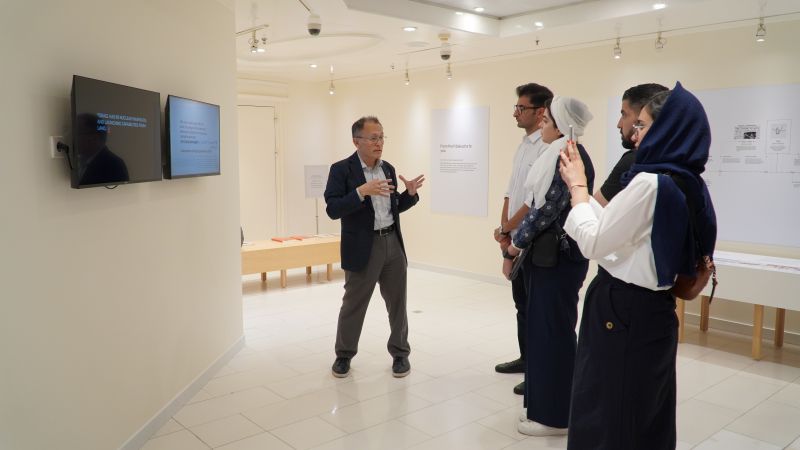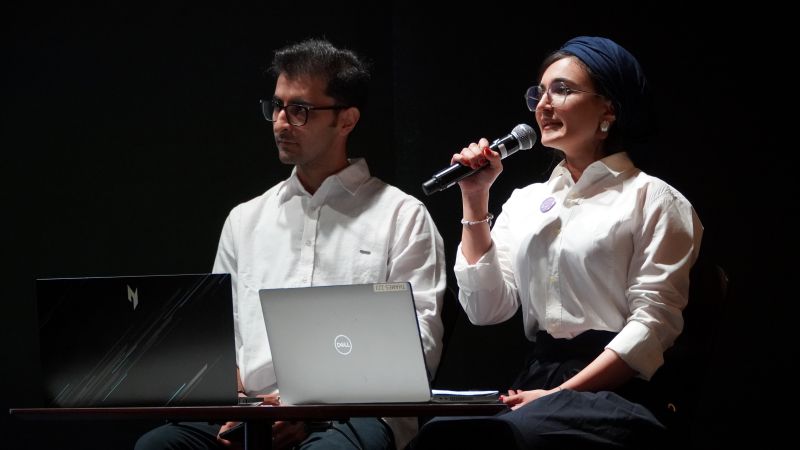
From the Ship
From Iran to Peace Boat: Cultivating a Culture of Peace with the Tehran Peace Museum
Three young volunteers in their twenties from the Tehran Peace Museum (TPM), a museum that focuses on peace education based in Tehran, the capital city of Iran, joined Peace Boat’s 120th Global Voyage as part of the TIME FOR PEACE Project, a special initiative to mark 80 years since World War II. They talked about their activities at the museum, which hosts interactive workshops with local youth and children to educate them about the consequences of conflict with a particular focus on the aftermath of the use of chemical weapons. TPM is also known for its innovative method of conveying historical facts by having survivors of the Iran-Iraq War of 1980-1988 work as guides to take visitors through the museum.
Peace Boat and TPM have had a long partnership, with Peace Boat staff Jasna Bastic coordinating programs with the museum to invite their staff and volunteers to the ship on previous voyages. Joining the 120th Global Voyage were Hania Asadi Afshar, a human rights expert and peace advocate; Zahra Kalantari, a peace activist, member of the Mayors for Peace Vision 2020 Campaign as well as an intern at the In Flanders Fields Museum in Belgium, dedicated to the study of World War I; and Payam Roshan, also a peace advocate active at TPM. They were accompanied by Zmnako Ahmed, a survivor of the Halabja massacre of 1988, the largest chemical weapons attack directed against a civilian-populated region in human history, who was reunited with his mother after 21 years with the support of TPM. (Read more about Zmnako by clicking here).
Located in Tehran’s oldest park, TPM is a nonprofit organization that was established in 2011. The idea for founding TPM emerged in 2005, when a representative of the Chemical Weapons Victims Association met with the general director of the International Network of Museums for Peace (INMP). TPM is a member of this global association that brings together museums, memorials, and organizations that foster peace, nonviolence, and reconciliation through education and cultural exchange, currently headquartered in Kyoto, Japan.
While on board, TPM volunteers Hania, Zahra, and Payam gave a lecture introducing TPM, held a Q&A session with the audience, interacted with young participants in a workshop, and brought artwork of Iranian children’s art to display in an exhibition on the ship. These artworks were selected in a Mayors for Peace Children’s Art Competition under the theme “Peaceful Towns”. “It’s so inspiring to see people younger than me engage in social activities,” said one participant as they viewed the artworks, "they've motivated me to take action.”
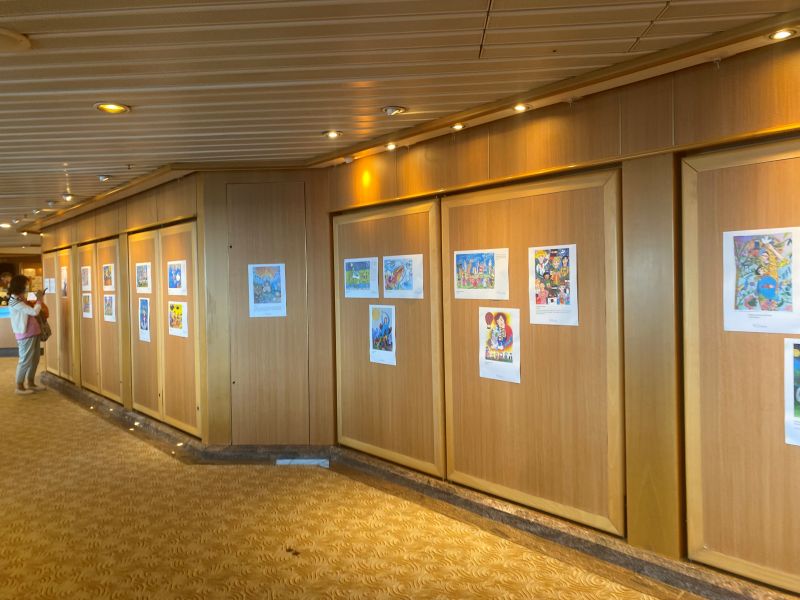
In addition, the TPM volunteers held discussion sessions with the Hibakusha (atomic bomb survivors) from Hiroshima and Nagasaki, Mr Ito Masao and Ms Kuramori Terumi, as well as survivors of wartime sexual violence from Ukraine, Ms Iryna Dovgan and Ms Halyna Tyshchenko from SEMA Ukraine. The young volunteers also visited the onboard outreach edition of the Nobel Peace Prize exhibition "A Message to Humanity," and discussed the issues of nuclear weapons with Kawasaki Akira, member of Peace Boat’s Executive Committee and International Steering Group member of the International Campaign to Abolish Nuclear Weapons (ICAN). Moreover, Zahra was interviewed online during her time onboard Peace Boat by a journalist from Kyodo News, a major Japanese news agency.
“Peace comes from within. We at the Tehran Peace Museum educate our visitors, including young people, to find internal peace and thereby communicate the culture of peace to the people around them,” explained Payam, talking about educating young people not to accept violence. Our three young guests from Iran were a powerful reminder that, no matter what age we are, we can all contribute to making the world a better place, and that survivors of attacks by weapons of mass destruction, such as chemical and nuclear weapons, can unite to create a safer future for all.


